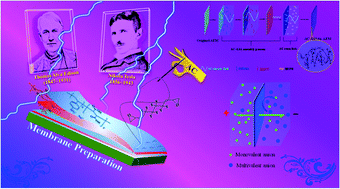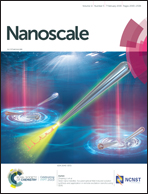Technology-driven layer-by-layer assembly of a membrane for selective separation of monovalent anions and antifouling†
Abstract
Selective separation of monovalent anions with reduced fouling is one of the major challenges for anion exchange membranes (AEM) in electrodialysis (ED). In this research, an alternating current layer-by-layer (AC∼LbL) assembly technology was first proposed and then applied to the construction of a durable multilayer with the selective separation of monovalent anions with reduced fouling. Under an alternating current (AC) electric field, the hydrophilic poly(4-styrenesulfonic acid-co-maleic acid) sodium salt and 2-hydroxypropyltrimethyl ammonium chloride chitosan were homogenized and rapidly assembled on a commercial original AEM and then crosslinked using 1,4-bis(2′,3′-epoxypropyl) perfluoro-1-butane. In ED, the permselectivity and the selective separation efficiency [separation parameter between sulfate (SO42−) and chloride (Cl−) ions] of the resulting membrane (AC∼LbL#7.5 AEM) were 4.87 and 62%, respectively, whereas the original AEM had corresponding parameters of 0.81 and −8%, respectively. Furthermore, the AC∼LbL#7.5 AEM still retained a permselectivity of 4.52 and a selective separation efficiency for Cl− of 57% after 96 h of ED operation. In addition, the AC∼LbL#7.5 AEM showed an excellent antifouling property when three types of organic fouling materials: sodium dodecylbenzenesulfonate, bovine serum albumin and humic acid were used as model foulants.



 Please wait while we load your content...
Please wait while we load your content...